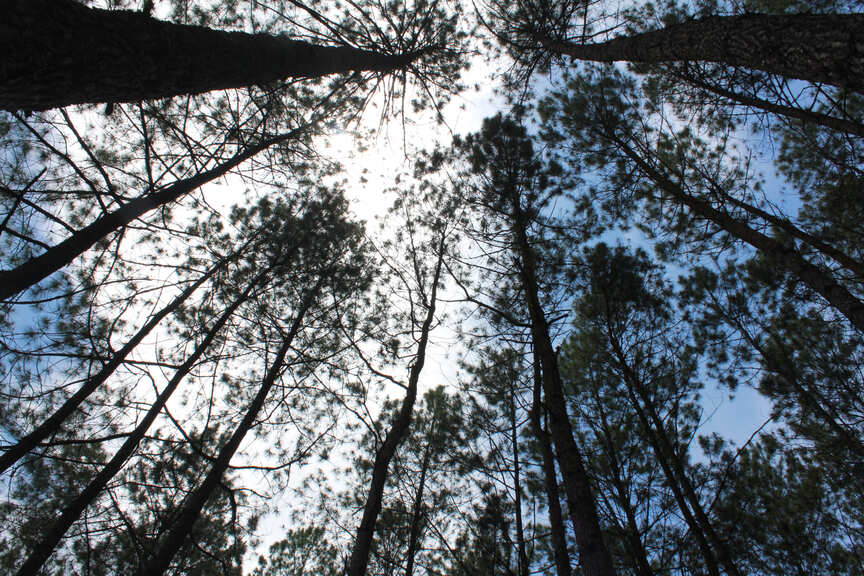Pine trees are a beloved and iconic part of many landscapes, offering year-round greenery, natural beauty, and a sense of tranquility. However, maintaining these majestic trees requires a careful and thoughtful approach to ensure their long-term health and vitality. In this comprehensive guide, we’ll explore the essential aspects of Pine Tree Maintenance, covering pruning techniques, watering requirements, ideal soil conditions, common problems, and preventive measures.
What are the Best Practices for Pruning Pine Trees?

Proper pruning is crucial for the overall health and appearance of pine trees. When it comes to pruning pine trees, the best practices include:
- Timing: Prune pine trees during their dormant season, typically late winter to early spring, to minimize stress and promote healthy growth.
- Techniques:
- Make clean cuts just outside the branch collar to ensure quick healing and minimize the risk of fungal diseases.
- Avoid over-pruning, as it can lead to stress and unbalanced growth.
- Use sharp, clean pruning saws or loppers to prevent damage to the tree.
- Specific Techniques for Different Pine Species:
- For White Pine, prune in late winter to early spring, focusing on removing dead or diseased branches.
- For Loblolly Pine, prune in late winter to early spring, with a focus on maintaining a balanced structure.
- Recommended Pruning Intervals: Prune pine trees every 6-12 months, depending on the species and growth rate.
- Impact of Improper Pruning: Improper pruning can lead to stunted growth, unbalanced structure, and increased susceptibility to diseases and pests.
What are the Watering Requirements for Pine Trees?

Proper watering is essential for the health and growth of pine trees. Here’s what you need to know about the watering requirements:
- Frequency and Amount:
- Water pine trees every 7-14 days during dry periods, depending on the climate and soil type.
- Apply 1 inch of water per week, either through rainfall or irrigation.
- Use a slow-flowing hose or soaker to prevent soil disturbance and ensure even distribution.
- Signs of Overwatering or Underwatering:
- Overwatering: Yellowing needles, drooping branches, or waterlogged soil.
- Underwatering: Wilting, yellowing, or browning needles, and dry soil.
- Role of Climate and Soil Type:
- Climate: Adjust watering frequency based on rainfall and temperature. In hot, dry climates, water more frequently.
- Soil Type: Sandy soils require more frequent watering, while clay soils require less frequent watering.
What are the Ideal Soil Conditions for Pine Trees?
Pine trees thrive in specific soil conditions, and understanding these requirements is crucial for their long-term health and growth.
- pH Levels: Pine trees prefer slightly acidic to neutral soil pH, ranging from 6.0 to 7.0.
- Soil Texture: Pine trees thrive in well-draining soils with a mix of sand, silt, and clay.
- Drainage Requirements: Ensure good drainage to prevent waterlogged soil, which can lead to root rot.
- Organic Matter Content: Maintain a layer of organic mulch around the base to conserve moisture and regulate soil temperature.
- Soil Amendments and Testing:
- Test soil pH and nutrient levels annually to determine necessary amendments.
- Apply balanced, slow-release fertilizers as needed, following the manufacturer’s instructions.
What are the Common Pine Tree Problems and How to Address Them?
Pine trees can face various pests, diseases, and environmental stressors. Understanding these common problems and their solutions is crucial for maintaining the health and vitality of your pine trees.
- Pests:
- Bark Beetles: Use insecticides specifically labeled for bark beetles, applying them in late winter to early spring.
- Pine Weevils: Apply insecticides in late summer to early fall, targeting the weevil larvae.
- Diseases:
- Pine Wilt: Use fungicides specifically labeled for pine wilt, applying them in early spring and summer.
- Needle Blight: Apply fungicides in early spring and summer, targeting the affected needles.
- Environmental Stressors:
- Drought: Water regularly, and consider mulching to conserve moisture.
- Poor Soil: Test and amend soil as necessary to ensure optimal conditions.
What are the Preventive Measures and Treatment Options for Pine Tree Issues?
Maintaining the health and vitality of your pine trees requires a proactive approach. Here are some preventive measures and treatment options to consider:
- Regular Monitoring: Inspect your pine trees regularly for signs of pests, diseases, or environmental stress.
- Proper Pruning: Prune your pine trees regularly to maintain a healthy structure and prevent disease spread.
- Soil Care: Maintain optimal soil conditions through proper watering, mulching, and fertilization.
By following these best practices for Pine Tree Maintenance, you can ensure the long-term health and beauty of your pine trees, creating a serene and sustainable landscape for years to come.
Reference:
- All You Need to Know About Pine Trees by The Grounds Guys CA: https://www.groundsguys.ca/blog/2017/january/tree-of-the-month-pine/
- Trimming Pine Trees: Essential Tips and Methods by McCullough Tree Service: https://mcculloughtreeservice.com/tree-trimming/trimming-pine-trees/
- Pine Tree Care Guide by Executive Tree Care: https://www.executivetreecare.com/pine-tree-care-guide/
